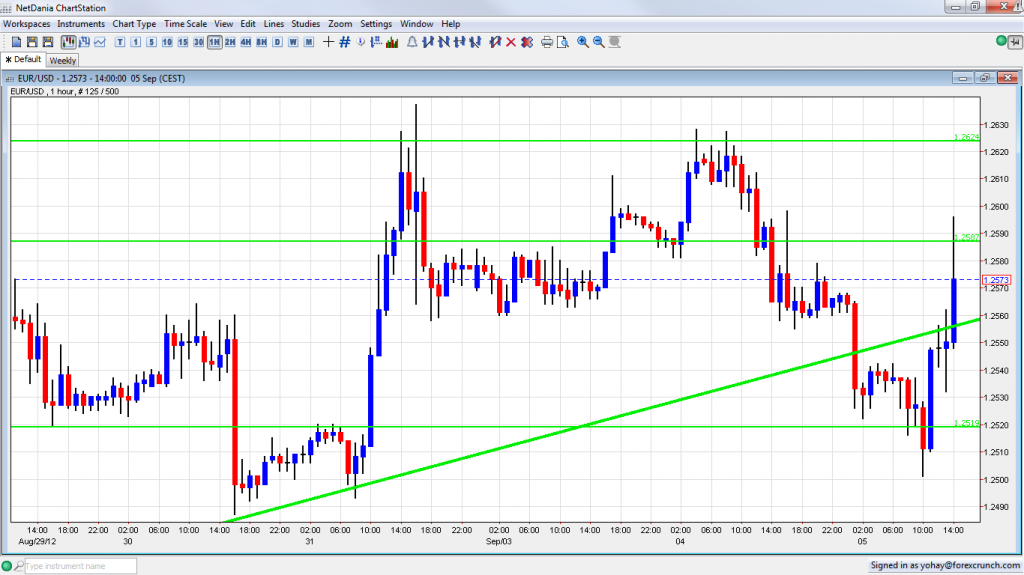The ECB’s bond buying plans have leaked one day in advance, and they seem grand. Corrected: the ECB will not align with central banks in the US and UK, and according to this report, will refrain from buying bonds without draining out the money – so no quantitative easing (euro printing) per se for now. However, the grand plans still seem serious and the option of QE could still come as unlimited bond buys couldn’t be easily drained.
Details show the plan is bold and serious. EUR/USD leaps back and is on the edge of the higher range. Will it break higher? Update: The pair is well within higher range, at 1.26 at the time of this update.
EUR/USD is now trading around 1.2587 – the pivotal line. It rose from the abyss seen earlier in the day when it got close to uptrend support. Serious resistance is at 1.2624, if the pair wants to prove it is breaking out of range.

Bloomberg got its hold on some interesting details: the ECB will buy an unlimited amount of bonds and will practically have no limit on the yield or spread. At least this will not be made public.
In addition, the leak confirmed a previous statement by Draghi about buying bond of up to 3 years in maturity – a rather wide array of bonds. This also corresponds with the 3 year LTROs.
This site has called for Euro-zone QE as early as July 2011. It wasn’t the only one. It took a change in ECB leadership, a severe economic deterioration and also the risk of euro-zone breakup to push the ECB to action, but according to this report by Bloomberg, the ECB is not going for QE at this time. Mario Draghi said that unsterlized bond buys are possible at the August meeting, but didn’t opt for that. Perhaps refraining from QE is made to ease German opposition.
However, bond buying at a massive scale cannot be easily drained out of the markets. Reminder: The ECB is the only force that is able to act fast and in an unlimited fashion.
In general, going for unsterilized bond buying means creating more euros out of thin air – devaluing the euro. However, the devaluing effect has been felt strongly only in the US, but at a more limited scale in the UK or in Japan.
So, in theory, no QE is better for the euro. In practice, a stronger move to safeguard the existence of the euro would be much better for the euro than the side effect of printing euros.
Now it’s Spain’s turn to act: with internal pressure from banks (especially Bankia), and regions (especially Catalonia) which weigh on the central government, Spain has little room to move.
The problem for Spain is that by asking for aid, it will conditioned to more austerity and troika supervision, Greek style. And this path isn’t optimal for the economy nor the Spanish public.
For more on the euro, see the EUR/USD prediction.
